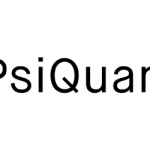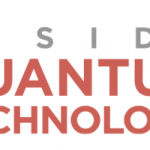Inside Quantum Technology’s “Inside Scoop:” Quantum and Quantum Education

Quantum computing is an emerging field of study that has the potential to revolutionize how we process information. However, the development of quantum computing is still in its early stages and requires a high level of expertise to be fully realized. Education in quantum computing is therefore crucial for both developed and developing countries to catch up and harness its potential. In this article, we discuss the importance of using quantum education to level the playing field, as well as give a few examples of key quantum educational groups within the current ecosystem. As there are many more quantum educational programs out there, this list is not an accurate representation of the opportunities students have to learn in this space but instead highlights a few key programs.
Developing countries face unique challenges when it comes to quantum education. First, these countries may not have the same resources and funding as developed countries, making it harder for them to establish research centers or invest in the necessary infrastructure. Second, they may lack the expertise required to fully engage in research in this field. Therefore, quantum education can help these countries overcome these challenges. “Many quantum education programs are digital and can be accessed from anywhere in the world, regardless of the quantum infrastructure of the country,” explained Dr. Olivia Lanes, an IBM Quantum researcher and the North American Lead for IBM Quantum’s educational program, Qiskit. “This has already brought exposure and the promise of new, exciting career and learning opportunities to people who wouldn’t otherwise be aware of their existence. By putting so much online, you no longer need to have access to the privileges of a fancy school or expensive lab to learn quantum physics hands-on.” Lanes has previously discussed the importance of quantum education in an article for Scientific American.
This type of learning also can help developing countries bridge the technological gap with developed countries. “International virtual education opportunities and virtual access to quantum computers could certainly help level the playing field,” stated Gabbie Meis and Ali Warshay of QubitxQubit, a non-profit quantum education program. “We know the resources available to students still vary incredibly depending on where you’re located, but programs like ours are intended to be a stepping stone to advanced studies in universities or industries.”
Quantum computing has the potential to disrupt several industries, and developed countries are already investing heavily in research and development in this area. However, developing countries can also catch up by investing in education and research in this field. “Quantum educational programs are reaching all countries across the globe, and there’s a surge in interest in taking up quantum computing-related jobs in both developed and developing countries,” explained Shraddha Shankar Aangiras, the founder of the quantum education program Quetzal. With quantum courses being offered predominantly online, I think the playing field is getting even already.” By doing so, they can create new opportunities for their economies and industries, and position themselves as leaders in quantum computing.
Even in developed countries like the U.S. or the U.K., quantum education is still lacking. As Lanes explained, “The quantum workforce is still very underdeveloped in the US, and without broader exposure, this problem won’t resolve any time soon.” This creates huge problems for quantum computing companies and research programs looking to fill their teams with qualified candidates.
For Lanes, the lack of quantum education is a more general issue than just the quantum ecosystem. “As for education as a whole, I very much believe quantum education is good for STEM in general,” she added. “We have become a society so dependent and reliant on science and technology, yet so few people truly understand them (Carl Sagan said this first, I’m paraphrasing). With the rise of AI, quantum, and other technologies, we stand in a precarious place where these technologies will need to be used by many, but development is only in the hands of the few.”
Looking at Different Quantum Education Programs
To address these issues in quantum education, Lanes, Meis, Warshay, Aangiras, and many others around the world have helped create various learning programs to teach the basics of quantum computing, trying to bridge the workforce gap. This in turn gives people from all over the world the opportunity to develop specific skills and make them more employable for future job openings. In countries like India where the job market is extremely constrained, quantum education can give many students an advantage in finding a job within the country, as India’s quantum ecosystem is growing significantly, but also look elsewhere if the individual wants to.
Lanes helps lead the Qiskit quantum education program supported by IBM Quantum. This program is one of the most highly used educational programs and allows students to achieve certificates and qualifications in different aspects of quantum computing. “I think Qiskit is unique because it is not only a great, open-source, educational tool but it is also a state-of-the-art research tool as well,” Lanes added. “It’s great for all levels of learners, from people who are just starting their quantum journeys to expert researchers in the field trying out a new experiment.” Because of its wide accessibility, both individual students and companies who want to implement quantum strategies can learn from this curriculum. As Lanes explained, “There are many ways to leverage these programs. For example, individuals can use the Qiskit textbook and YouTube series to upskill themselves, and companies/partners can send delegates to summer schools who then can bring back newly acquired knowledge to their company. I think all the free resources are crucial for the further development of the quantum ecosystem because it allows both companies and individuals the ability to learn material that previously had been locked behind the doors of higher education. For very little initial investment, you can open doors to future technology.”
Others like Meis and Warshay agree that quantum education requires little initial investment. Their program, QubitxQubit, utilizes IBM Quantum’s quantum computing technology to teach a more targeted audience. “Qubit by Qubit focuses on what we define as the ‘Early Learner,’” Meis and Warshay stated. “Most of our work centers on high school and undergraduate education and workforce development, but we’ve also had teachers, retirees, and those in the workforce who are new to quantum and looking for an accessible introduction.”
As Meis and Warshay, along with the QubitxQubit team is targeting students with less of a computing or science background, they want to make sure their program is as accessible as possible. They explain that “We know most textbooks and other resources are not at the level where students feel confident to dive in right away – thus, the structure of live, virtual programming with small group labs really helps make a difference for our students. Above all else, we aim to serve students who are underrepresented in STEM, be those individuals from minoritized gender or ethnic backgrounds, first-generation, or identify with another background underrepresented in STEM, and those who may not otherwise have access to opportunities like this, which means grassroots outreach and meeting students where they’re at – classrooms, community organizations, and online.” With students in the “early learner” phase, Meis and Warshay believe that anyone can take advantage of their quantum education program. “Quantum computing is such an interdisciplinary field, and the skills developed in quantum education programs are universally transferrable to other fields and careers, whether for marketers or quantum scientists. For folks who may think quantum computing is too challenging or complex to get started, we have very few if any prerequisites. I would encourage them to get in touch with QubitxQubit to explore what opportunities would make the most sense to get started with! [For questions about QubitxQubit’s programs, please reach out to quantum@the-cs.org].”
Others, like Aangiras, have developed more localized quantum education programs. As Aangiras explained: “Quetzal is a quantum computing career accelerator for undergraduate students in India. We will be training 2,000 undergraduate students across India in quantum computing, with the aim of upskilling them and improving their employability. We are accepting all STEM students, as we believe it’s essential for them to know future tech. This program will be unique by providing the top 100 students with quantum computing internships, that will help them increase their skills and employability in quantum. We already have our first partner and are in conversation with a few other companies too. These companies will be hosting our interns and are excited to see more students getting into the quantum industry.” As India is currently facing a giant job shortage, Aangiras and others believe that quantum computing can help to offer more competitive and attractive opportunities for India’s growing workforce. Though Aangiras herself is still in high school, she believes that a more localized and broad quantum education program can be beneficial for her community. ” With quantum being so interdisciplinary, anyone in STEM can enter and contribute immensely. Quantum education programs also have a lot of physics, maths, and computer science integrated into them, so individuals can also benefit from an improved understanding of these fields, even if they don’t pursue quantum computing,” she added.
Unlike Queztal, Microsoft’s Azure Quantum education program is more technical, focusing specifically on the quantum computing language of Q#. “People can explore quantum hardware for free with Azure Quantum as a part of our Quantum Credits Program,” stated Dr. Krysta Svore, distinguished engineer and vice president of Advanced Quantum Development, within Microsoft Quantum. “These programs educate about quantum computing and build knowledge of the technology for use in future careers.” With a more technical approach, Microsoft’s quantum education program is targeted at more advanced students with specific quantum careers in mind. As Svore stated: “All talent is critical to a quantum-powered future and Microsoft’s global quantum strategy is made better with help from around the world. Partner universities leverage Microsoft’s quantum programming language, Q#, and its associated development kit to educate the next generation of computer engineers and scientists.
Though quantum computing is still being developed, many quantum education programs and organizations are taking advantage of this lag time to train the next quantum workforce, so that when the time is ready, the industry can expand even more.
Kenna Hughes-Castleberry is a staff writer at Inside Quantum Technology and the Science Communicator at JILA (a partnership between the University of Colorado Boulder and NIST). Her writing beats include deep tech, quantum technology, and AI. Her work has been featured in Scientific American, Discover Magazine, Ars Technica, and more.























